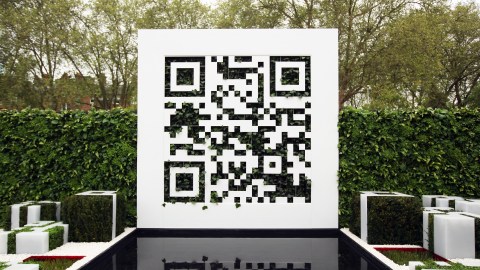Why Do Technological Solutions Often Miss the Mark So Badly?

Kitchens also have a long history of containing more mechanical doodads than any other room, and so, for decades, inventors and futurists have wondered about the kitchen of tomorrow. Looking back on their visions, however, it’s clear just how overwhelmingly beholden product designers — supposedly forward-looking people — were to the arbitrary cultural expectations of their day. Those kinds of norms, which have acted as design blinders for the better part of a century, continue to diminish our ability to dream up the best possible solutions for the people who need them. It’s an issue that starts in the kitchen, but ends up affecting many aspects of life in all different people — including older adults.
In her wonderful piece “Why the ‘Kitchen of the Future’ Always Fails Us,” posted in Septmeber on the food blog Eater, science writer Rose Eveleth takes a deep dive into the retro-future of kitchen design. Historical visions of the kitchen’s future, she argues, rich in forward-facing technologies like robot butlers and all-glass displays, have always had an unfortunate tendency to look back to the same decade for their cultural inspiration: the Leave It To Beaver 1950s. In the typical retro-future kitchen, she writes:
…our lovely future wife is making dinner. She always seems to be making dinner. Because no matter how far in the future we imagine, in the kitchen, it is always the 1950s; it is always dinnertime; and it is always the wife’s job to make it. Today’s homes of the future are full of incredible ideas and gizmos, but while designers seem happy to extrapolate far beyond what we can do today when it comes to battery life or touch screens, they can’t seem to wrap their minds around any changes happening culturally.
That 1950s idea of home life is long since on its way out. And yet even today, futurists’ ideas of tomorrow’s kitchen rely on it. Eveleth describes recent, forward-looking promotional materials from Ikea, Microsoft, and Corning Glass that all still smack of an old-fashioned vision of the future.
A big part of Eveleth’s critique (beyond all the persistent sexism) is the fact that tech designers too often act like the proverbial hammer-owner who treats the whole world like a nail. Just because barcode readers and RFID tags exist, do we really need products that incorporate them in order to tell us what’s in our fridge? Do we really need a smart fork that tells you to eat more slowly, to chew more thoroughly? A stove controlled by phone? A toaster that sends email?
The stakes may be higher than they seem, because comparable “solutions” in the past haven’t always benefited the end user — a trend perhaps best described in Ruth Cowan’s seminal book, More Work For Mother. In it, Cowan describes “innovations” throughout history that have shifted the burden of housework from men to women. Is it possible that the retrograde ideas about the home that informed the aforementioned futurist marketing materials will also tell technologists which problems to solve? If so, will they shackle tomorrow’s kitchen users (i.e., almost everyone) to out-of-date ideas about how to live?
It’s a question similar to one I encounter in my own research concerning technologies aimed at older adults. As Eveleth points out, men dominate the workforces of most tech companies, and therefore technological solutions are too often filtered through a male viewpoint. In the same vein, tech companies are overwhelmingly young, and therefore solutions for older adults must first pass through the filter of what a young person’s idea of what “old” is. (It’s for this exact reason, when you expand the issue beyond tech development to product, store, and even city design, that the MIT AgeLab built AGNES, a bodysuit designed to allow younger designers and execs to experience what old age feels like.) The first challenge is to get young designers to care about the older market, period, but the next is to get them to understand that “older person” does not mean “walking medical problem.” Rather, older people are human beings, many of whom, yes, have medical issues. And that’s an important distinction. When you built tech not for real people, but rather for a mistaken idea of what you think people should be, you get technologies that real people don’t actually want. Consider those spotless, glassy future kitchens. Are they really built that way based on the desires of the chefs who would use them? Eveleth writes:
Imagine your dream kitchen, something with every invention and bell and whistle you might want. What does it include? I’d guess it doesn’t include a wall of hard-to-clean glass surfaces, or a self-stirring pot, or an easy way for your mother-in-law six states away to watch you cook. For me, it would include a self-cleaning function. Here’s how many times I saw anything about keeping the kitchen clean in all the future-home videos I’ve watched: Not once.
Now switch out the spotless glass kitchen, representing some non-cook’s idea of what a kitchen should look like, for boring, beige-and-gray devices, representing what some non-old-person’s idea of tech-for-older-people should look like. Unless it’s absolutely necessary to buy those products, they will stay on store shelves. Trust me.
But at the same time, I feel hopeful, and one source of that hope is the high likelihood that there will be better options on those store shelves, next to all the beige stuff. Simply put, tomorrow’s older consumers will be more empowered than any prior generation to make decisions that will support how they want to live. Aging baby boomers wield a huge chunk of the nation’s — and world’s — economic pie, and when I say “wield,” I mean “like a meat cleaver.” Solutions that don’t cut it will be cut. At the same time, most household purchasing decisions in boomer families, and in families of all ages, are made by women. Those factors are not by any means going to solve the problem of the young, male domination of the tech industry — but still, in some cases, companies are starting to pay attention to the actual needs and wants of the consumer-as-individual. To stick with the kitchen, General Mills has several test kitchens for families of different ethnicities — the idea being that, say, a Latin kitchen is going to look different from, and will require different tools and materials than, my Greek/Italian one, where oregano ranks equal to salt and pepper in importance. I hope that delving in deeply to figure out how individuals actually use products will succeed in tomorrow’s marketplace. It certainly feels more likely to prevail than any design ethos built on a monolithic, outdated vision of the world.
—
MIT AgeLab’s Lucas Yoquinto contributed to this article.
Photo from Shutterstock





